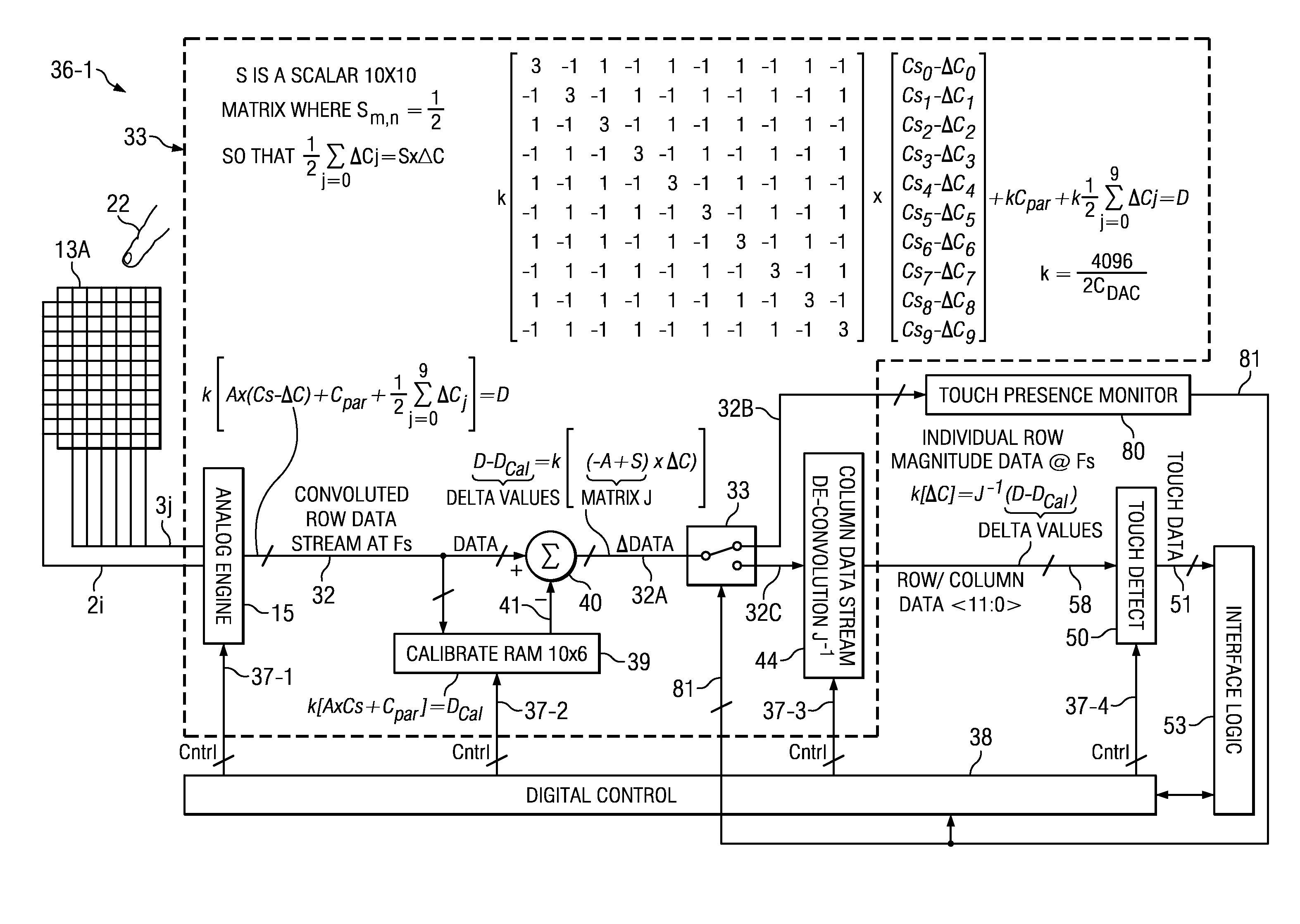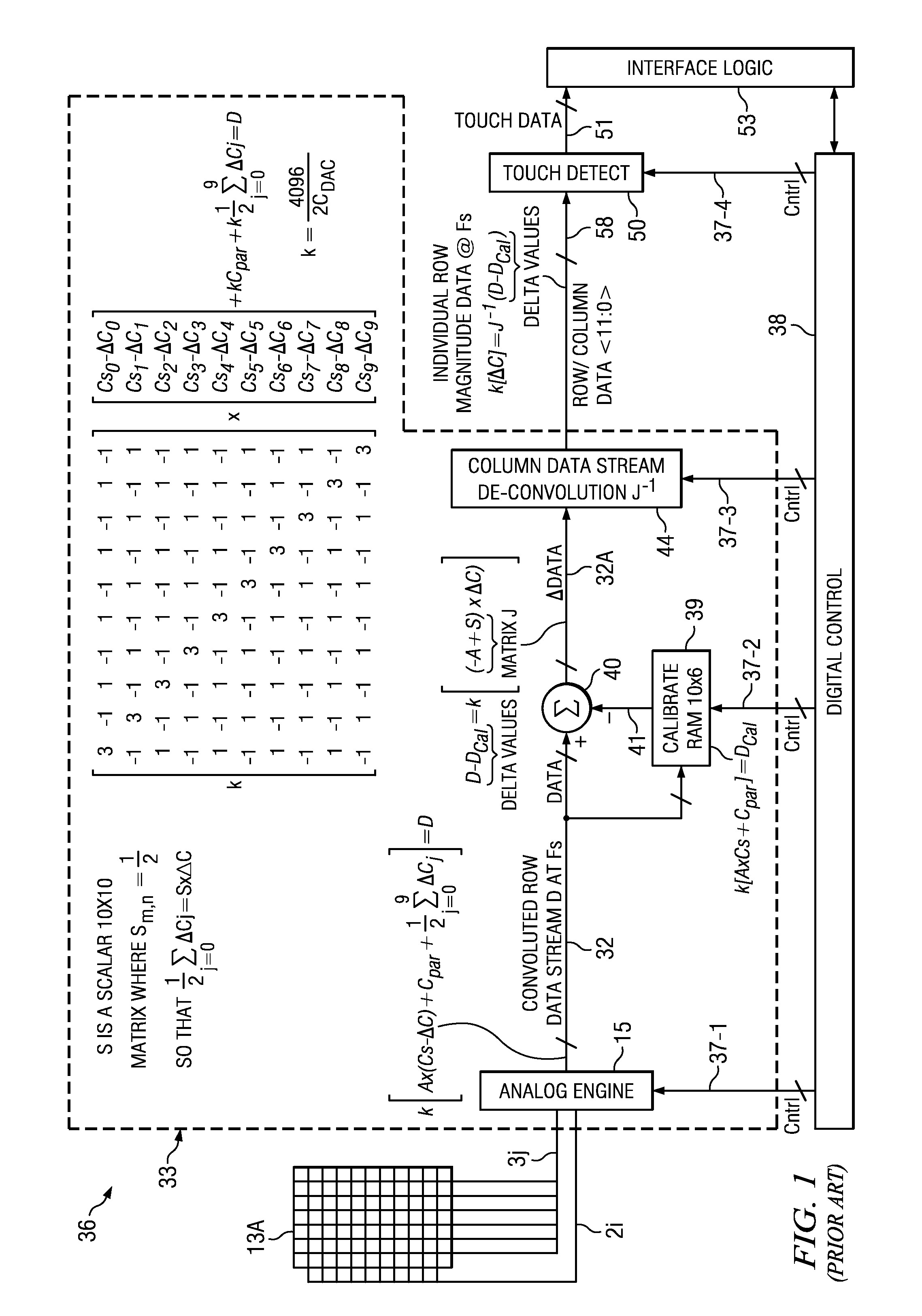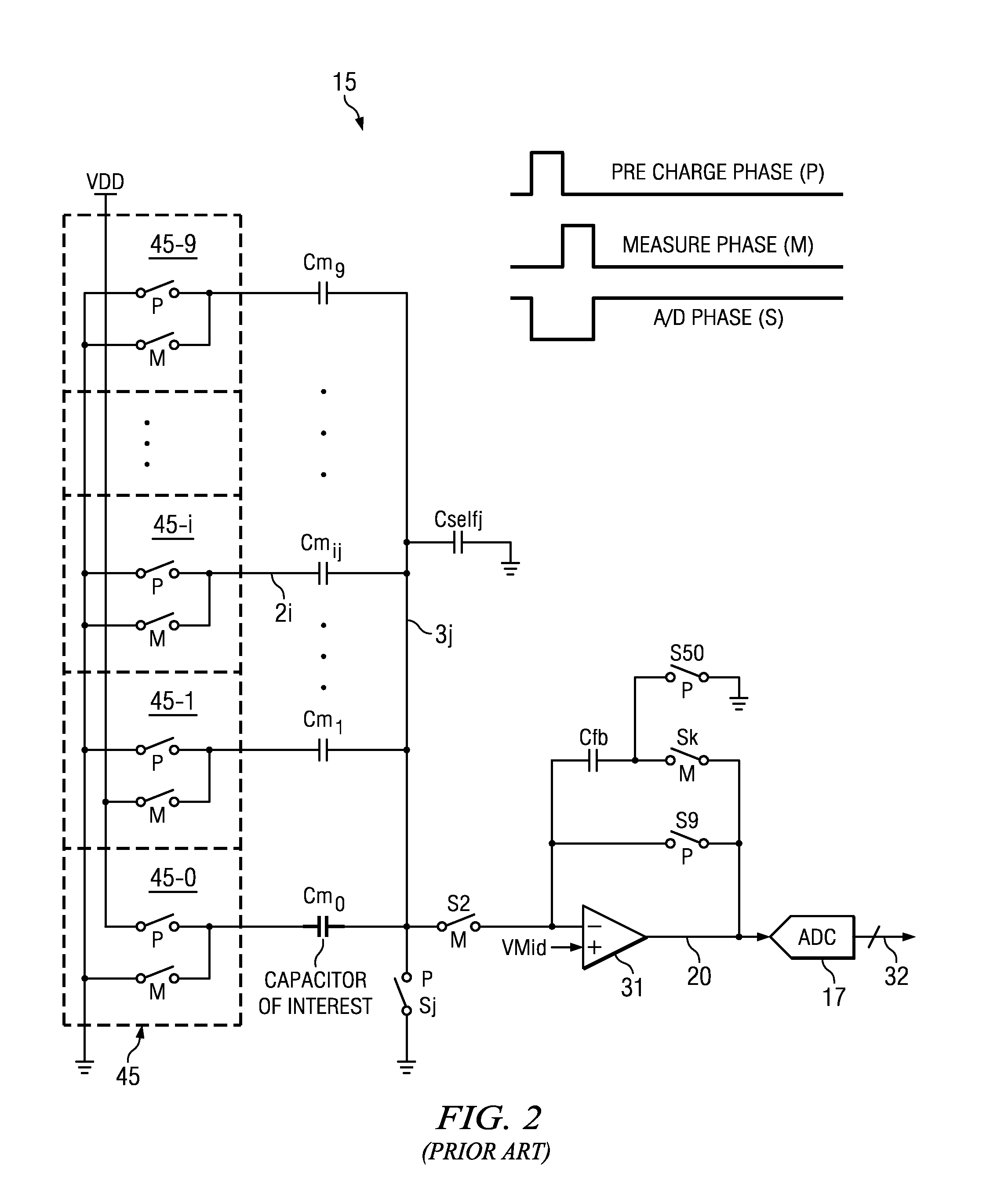Low-Power Capacitive Sensor Monitoring and Method
a capacitive sensor and low-power technology, applied in the direction of instruments, computing, electric digital data processing, etc., can solve the problems of high associated power consumption, inability to determine if a touch is present, and inability to use a touch in real time, so as to achieve less complex hardware and software, less power consumption, and less power consumption
- Summary
- Abstract
- Description
- Claims
- Application Information
AI Technical Summary
Benefits of technology
Problems solved by technology
Method used
Image
Examples
Embodiment Construction
[0062]Touch screen controller system 36-1 in FIG. 5 includes everything in Prior Art FIG. 1, and further includes touch presence monitoring circuit 80, which operates during a low-power “touch presence monitoring mode” to detect the presence of a valid touch on touch screen panel 13A. The portions of touch screen controller 36-1 which are substantially the same as the portions shown in Prior Art FIG. 1 operate essentially the same as in prior art touch screen controller 36 of FIG. 1.
[0063]Touch screen controller system 36-1 of FIG. 5 has three main modes of operation, including the foregoing touch presence monitoring mode, the “full panel scanning mode” previously described with respect to Prior Art FIG. 1, and also a “deep sleep” mode. The touch presence monitoring mode is a low-power mode in which an application device (such as a cell phone, computer tablet, remote controller, or other battery-operated device having a touch screen) operates to periodically scan touch screen panel ...
PUM
 Login to View More
Login to View More Abstract
Description
Claims
Application Information
 Login to View More
Login to View More - R&D
- Intellectual Property
- Life Sciences
- Materials
- Tech Scout
- Unparalleled Data Quality
- Higher Quality Content
- 60% Fewer Hallucinations
Browse by: Latest US Patents, China's latest patents, Technical Efficacy Thesaurus, Application Domain, Technology Topic, Popular Technical Reports.
© 2025 PatSnap. All rights reserved.Legal|Privacy policy|Modern Slavery Act Transparency Statement|Sitemap|About US| Contact US: help@patsnap.com



